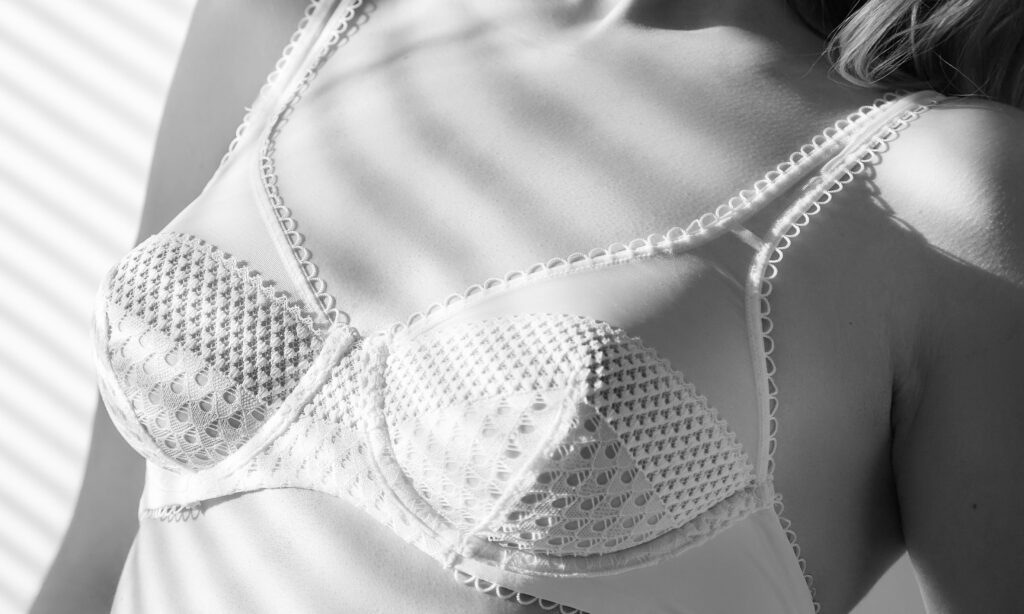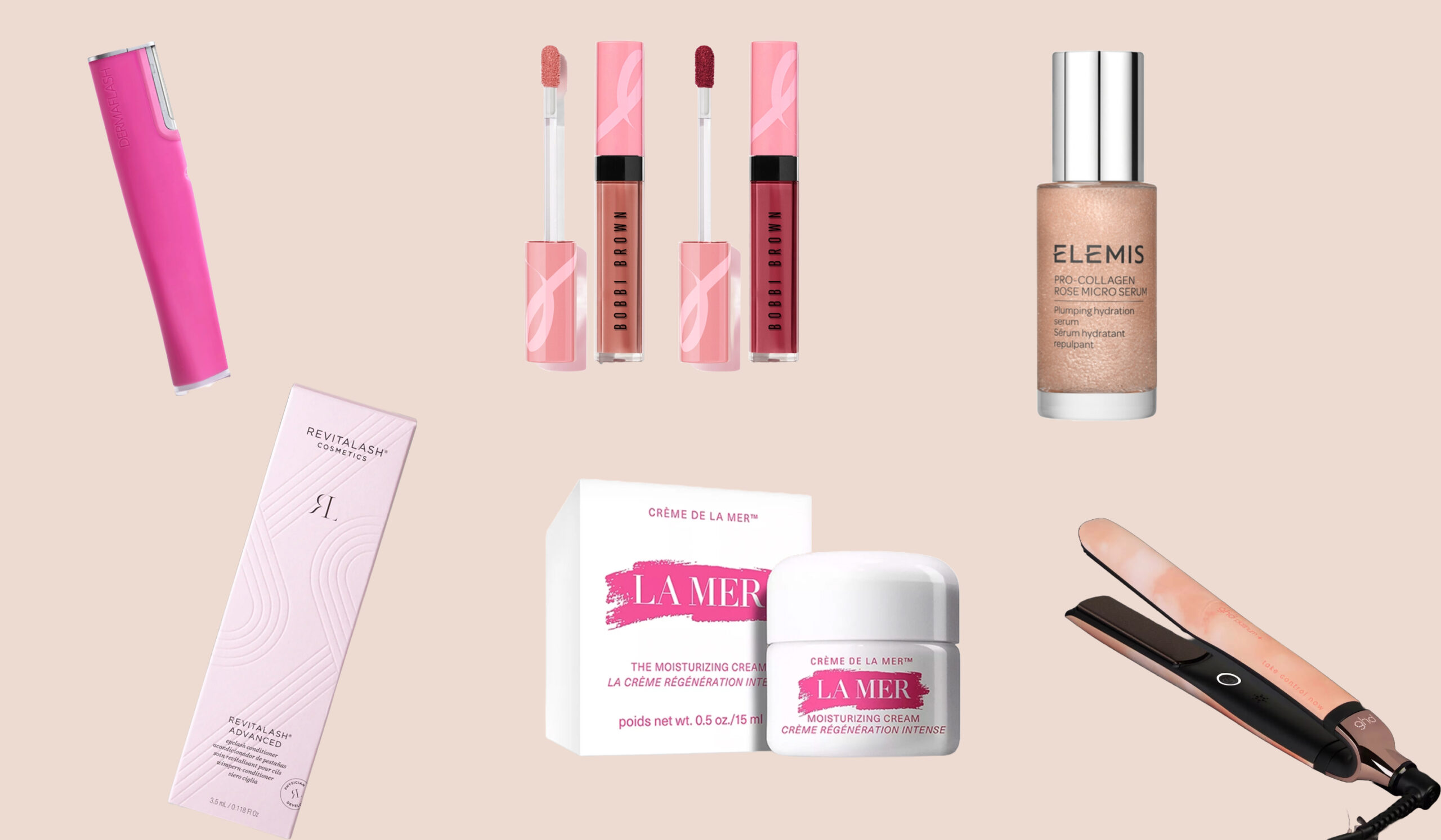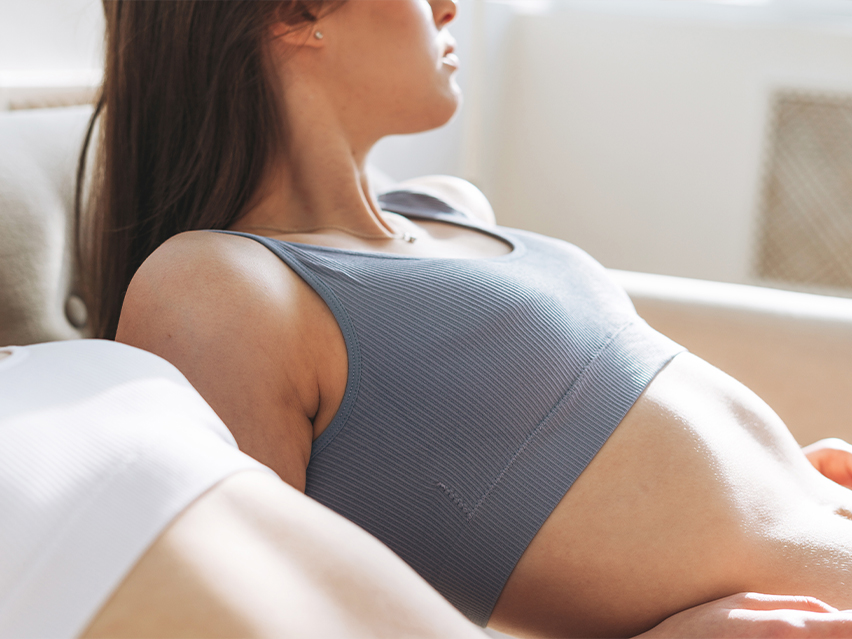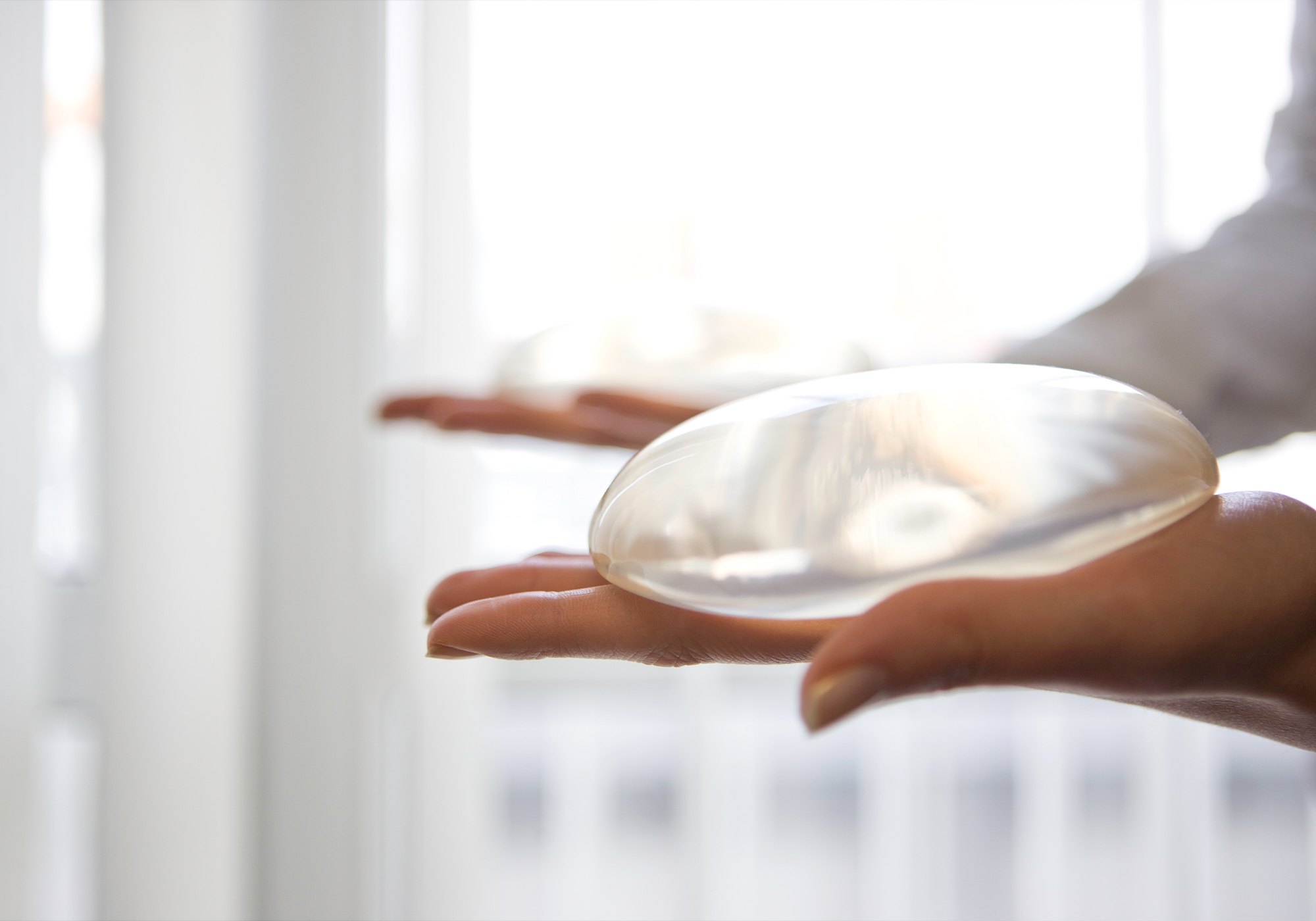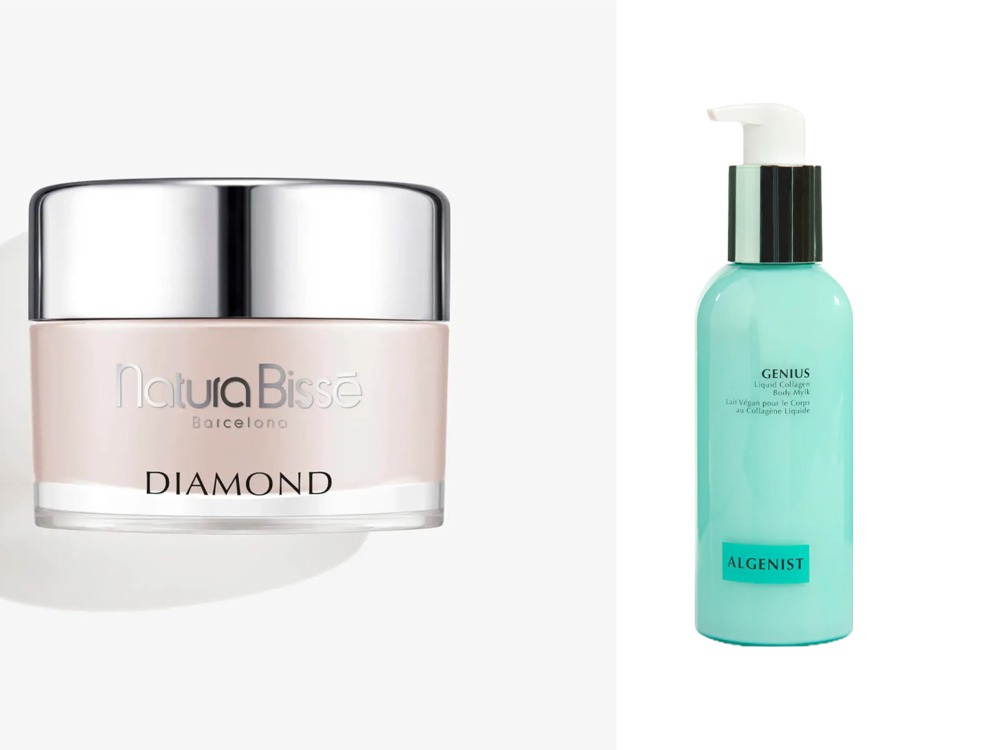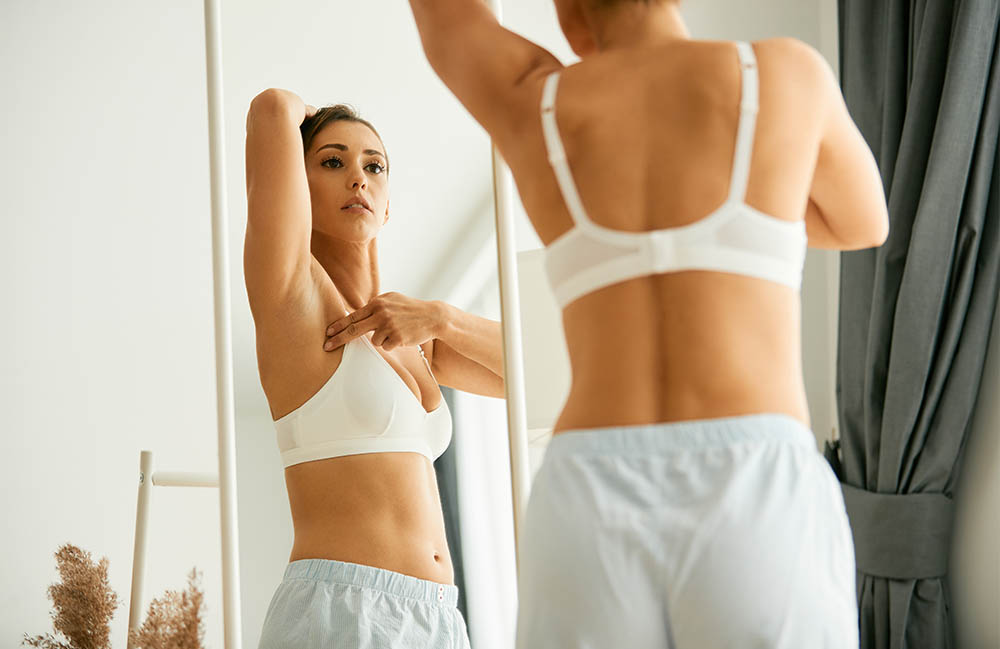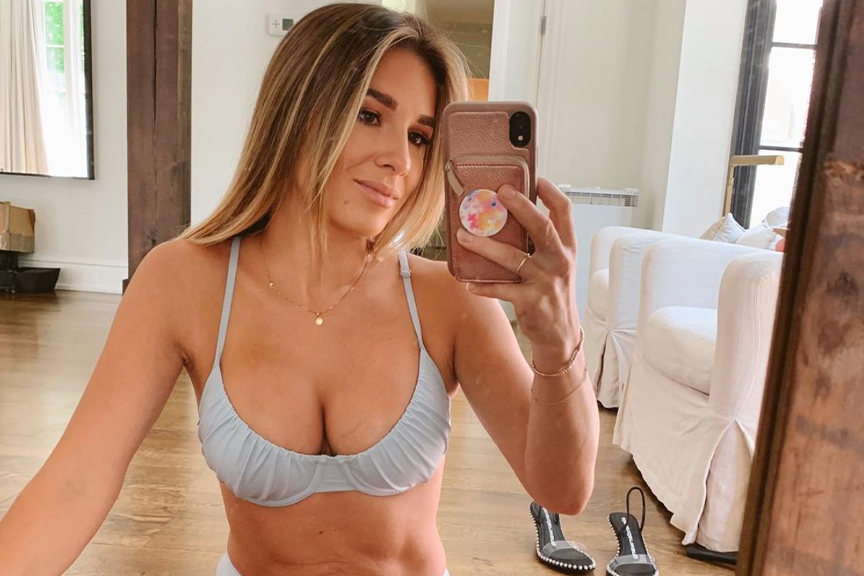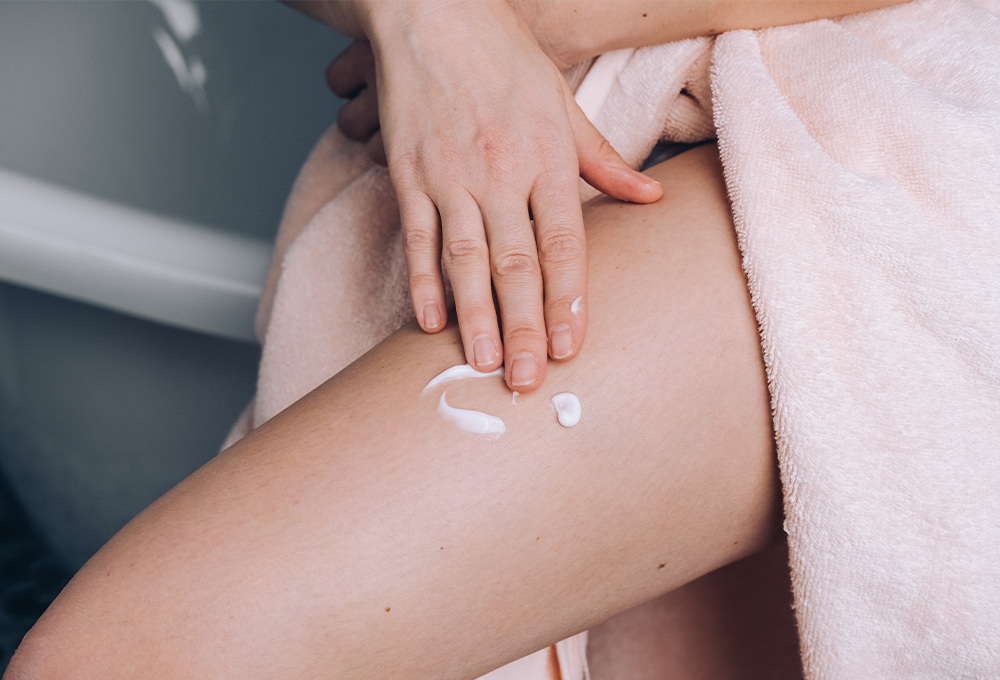When it comes to breast augmentation surgery, there are dozens of nuances depending on the patient. And, with technological and surgical advances, board-certified plastic surgeons can tailor procedures to their patients’ specific needs. However, like other procedures, there are some universal standards. These are the top questions patients ask their doctors (and readers ask us!) about breast augmentation. Here’s everything to know when it comes to safety, post-op pain, how to achieve a natural look, and more.
1. What should I expect at a consultation for breast augmentation?
According to Southfield, MI plastic surgeon Mariam Awada, MD, the consultation is the most crucial step in the breast enhancement journey. “It’s an opportunity to collect all the information you need, share your expectations, goals and concerns, and learn about the benefits, risks and ongoing care related to the procedure,” she says. “Interacting with the staff, getting a feel for the practice environment, and establishing a connection and comfort level with your plastic surgeon are essential aspects.”
During a consultation at her practice, patients do several things. “They watch an educational video that explains the procedure and goes through various options,” Dr. Awada says. “They also look through before-and-after photo books to help articulate the look they’re aiming for. They also provide a detailed medical history and relevant test results, like blood work or mammogram results, especially for patients over age 40. The consultation takes into account many factors to determine the best procedure for achieving your desired outcome.”
A physical exam is also part of the process. “This includes measurements and tissue analysis, and helps plan your breast augmentation,” says Dr. Awada. “It identifies unique individual asymmetries—which are present in 85 percent of patients—that might require slightly different implants to achieve balance. For instance, many women have a more prominent left chest or more breast tissue on the left. If not accounted for, this could be exaggerated by identical implants on both sides. Adjustments, such as a mini crescent-shaped skin removal or mini-liposuction for bra fat, are discussed to ensure balance and enhance breast shape.”
2. Are silicone breast implants safe?
“Yes,” says San Diego plastic surgeon Larry Pollack, MD. “A 10-year study done in the 1990s and early 2000s looked at the incidence of medical diseases such as lupus, scleroderma, rheumatoid arthritis, and other autoimmune diseases. It found no difference between women with and without silicone breast implants. That being said, they can rupture, primarily due to trauma, and can cause local breast problems such as lumps or lymph node enlargement if present for a long time.” Dr. Awada adds, “Most patients opt for silicone-filled, highly cohesive gel implants, which provide a more superior feel and look compared to saline implants.”
3. Will my breast augmentation look natural?
“Natural is such a vague request, but this generally means having a gentle slope from the décolleté to mid-breast,” says Palo Alto, CA plastic surgeon David Boudreault, MD. “Any ’roundness’ in the upper breast is considered fake. Achieving a natural look comes down to choosing an implant that fits your body. When taking your body measurements into consideration and choosing the appropriate type of surgery, breast augmentation will look very natural. There are many ways to help determine the appropriate size, ranging from simple silicone sizers in the clinic to simulation software that can predict a surgical outcome.”
Dr. Boudreault recommends that his patients use a variety of techniques to estimate their desired breast size. “Then the appropriate implant dimensions can be selected to achieve this result,” he explains. “Although the most common regret is going too small, I’ve found that patients can deal with this issue more easily than going too large. I frequently say, ‘It’s harder to hide them than make them look larger.’ Also, having large breasts can make a woman look heavier in professional clothing, which is something that is often not considered during a breast augmentation.”
“Sizing is a collaborative process involving measurements and trying on implant sizers, allowing patients to visualize their desired outcome more effectively,” Dr. Awada adds. “This process helps define clear goals before surgery, significantly reducing the need for future adjustments. During surgery, sizers are used to ensure symmetry and balance under the patient’s tissues before selecting the final implant. It’s important to know if this practice is standard for your surgeon.”
4. Can I get breast implants instead of getting a breast lift?
“Implants do not lift breasts,” says Dr. Boudreault. “Whether through breastfeeding or weight loss, breasts can lose volume and ultimately sag. After breastfeeding, a mother can undergo a process called ‘involutional deflation,’ which can leave the breasts feeling empty and smaller than prior to pregnancy. If there is no sag in the breasts, then an implant can be used to restore the lost volume. If the breasts require a lift, then this is because the nipple-areolar complex (NAC) has fallen to or below the inframammary fold. Ultimately we are not talking about a breast lift, but rather a NAC repositioning. Although an implant successfully addresses breast size, we need to make sure that the NAC is positioned correctly on the breast for an optimal aesthetic outcome.”
5. Should I wait until I am done having children to have a breast augmentation?
“I personally don’t think patients should wait until after having kids,” says McMurray, PA plastic surgeon Simona V. Pautler, MD. “If you are flat-chested and your confidence suffers, then get the surgery. I prefer my patients to be at least 18 so they can make the decision themselves. However, I always counsel my young patients who haven’t had children yet that they will most likely need some surgical adjustment after childbearing. After having babies, breasts can shrink, stretch and become saggy, so a secondary surgery may be necessary.”
6. What is the best way to make sure I get the look I want?
“I don’t think stuffing an implant in a bra is useful because it doesn’t mimic the real look and feel of the implant inside the body,” Dr. Pollack says. “I prefer patients look at before-and-after pictures online: Many plastic surgeons, including me, have a lot of pictures of different body types with different breast anatomy, and looking at photos is the best way for the patient and I to be on the same page. I take the selected photos into the OR so that I can match the desired look as closely as possible.”
7. What is the most common age for breast augmentation?
“The most common age in my practice is mid-20s,” says Dr. Pautler. “The youngest I’ve seen is 16, and the oldest is 73. If patients are healthy, have normal mammograms and are otherwise good candidates, they can absolutely get breast implants. Age is only a number.”
8. Are there different breast implant shapes?
“The most commonly used implants are round, but they come in different profiles: low profile, moderate projection, high projection, and ultra-high projection,” Dr. Pollack explains. “The one we use depends on the look that the patient wants: natural, slightly round on top, or obvious! Most surgeons no longer use ‘teardrop-shaped’ implants because of the texturing on the shell.”
9. What should I expect after breast surgery, in terms of pain and downtime?
“After surgery, especially if the implant is submuscular, ice and resting your arms are best for the first week,” says Dr. Pautler. “Getting up and out of bed will be sore at first. A short-term antibiotic and prescription painkiller are usually prescribed for the first few days as well. The occasional patient may need a muscle relaxant. Swelling dissipates in about seven days, and the implants settle into place by six weeks. Some sooner, some later. If the implants are submuscular, certain exercises such as push-ups, ring dips, tricep dips, and bench presses have to be avoided for eight weeks.”
Dr. Awada adds, “Patients should expect their breasts to sit higher initially, with natural settling occurring over time. Specific postoperative instructions will be provided by your surgeon. The journey should be enjoyable and exciting, with a focus on achieving your best results while being prepared for a successful recovery and outcome.”
10. Why did the FDA place a black box warning on breast implants?
“Silicone gel implants have a long history of patients blaming them for their illness. But specifically, the FDA issued these warnings: 1.) Breast implants don’t last a lifetime. 2.) Complications can occur with breast implants, and the risks increase over time. 3.) Breast implants may be associated with a type of cancer and other symptoms,” says Dr. Boudreault. “In the 1990s, silicone gel implants were removed from the market to perform a 10-year clinical trial. It looked at whether or not silicone gel implants led to auto-immune diseases in women. The results of that study showed conclusively that the implants did not cause auto-immune disease.”
Despite this, Dr. Boudreault says women continue to seek implant removal to help with specific symptoms that can’t be explained or resolved with standard medical treatment. “We refer to this as breast implant illness, or BII [more on this in question 10]. Additionally, we have seen an association between silicone gel implants and Anaplastic Large Cell Lymphoma (BIA-ALCL), but it’s rare.”
“Based on a review of the reported cases (less than 1,000 worldwide), there has been only one case in the smooth gel implant,” Dr. Boudreault continues. “Currently, BIA-ALCL has been associated with a certain type of textured silicone gel device, but no conclusive cause and effect have been determined. All implants have a warranty that covers issues with implants, but there is no recommended timeline to remove or replace the implants. They are not considered a lifetime device. But, the removal or replacement is dependent on patient preference or a thorough discussion with your plastic surgeon.”
11. What is breast implant illness?
“Breast implant illness (BII) is thought to be a reaction to the implants as a foreign body reaction that can cause fatigue, muscle aches, depression, hair loss, dry eyes, and other illnesses,” explains Dr. Pollack. “There is still a lot of controversy regarding the association of implants with those symptoms. Many women, but not all, who have their implants removed because of BII do not get better in the long-term.”
12. Do I have to replace my breast implants every 10 years?
“No,” says Dr. Pollack. “Only if you have a problem, or are having another breast procedure 10 years later, such as a breast lift. It’s not mandatory if the implants are still OK, but it is recommended.”
